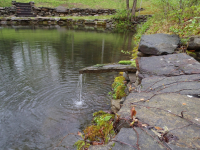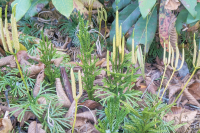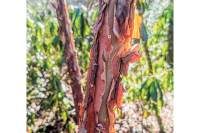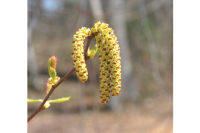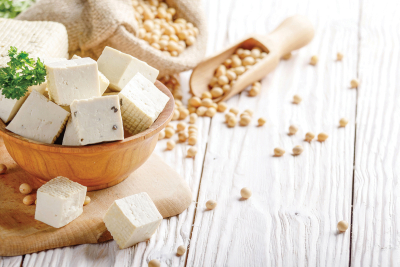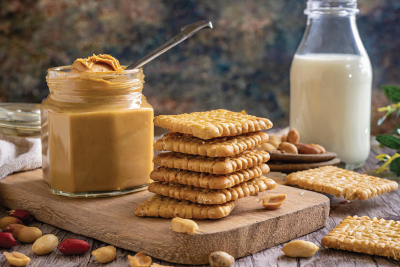Soldiers for sustainability: Common fly could help address pollution, boost sustainability
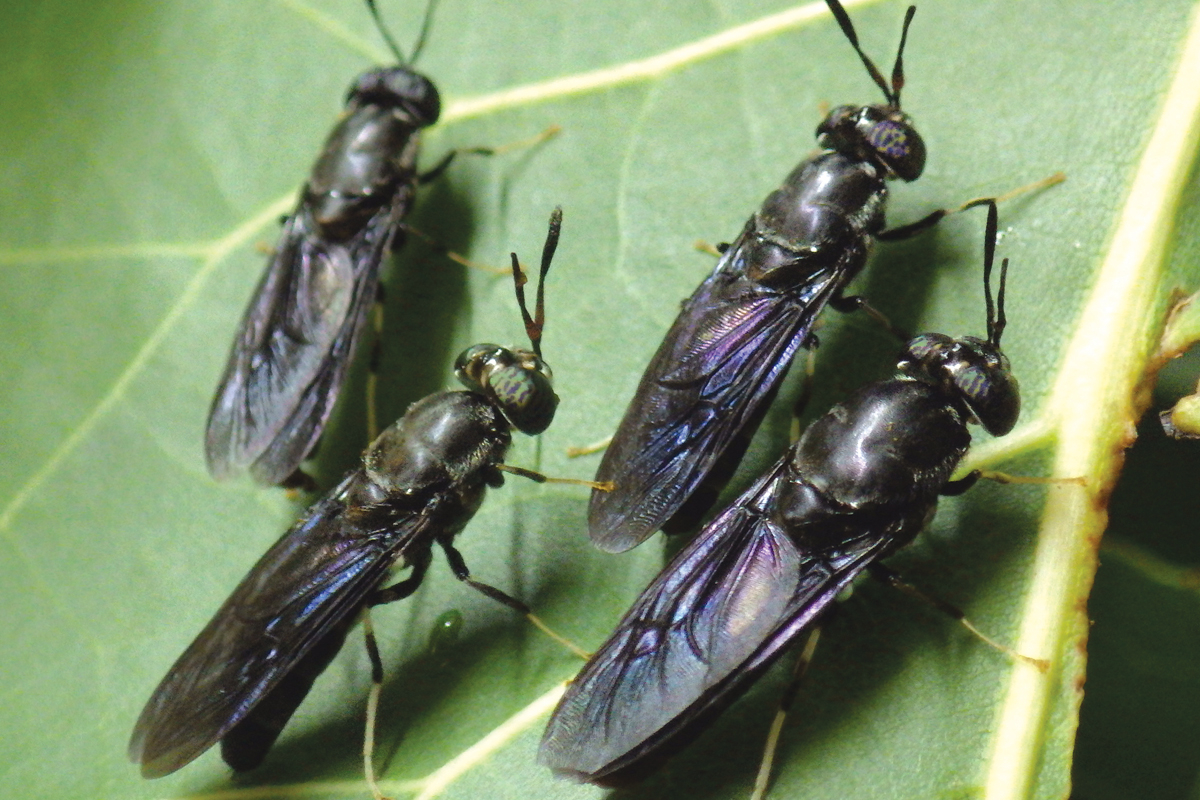 Often mistaken for wasps, black soldier flies are harmless to humans and found worldwide. Amy Dickerson photo
Often mistaken for wasps, black soldier flies are harmless to humans and found worldwide. Amy Dickerson photo
They can eat just about anything and multiply like crazy. They live all over the world, in a variety of environments — wherever you go, they’re likely nearby.
It sounds like the intro to a sci-fi or horror film, but actually it’s just a description of the black soldier fly, a ubiquitous bug that is not only harmless, but also the subject of a new wave of hopeful research. Some scientists believe the insect could help solve a plethora of pollution problems — while producing nutrient-rich fertilizer at the same time.
“It’s a rapidly expanding and diversifying industry that creates huge opportunities for people throughout the world so that we can recycle materials that historically have had no value,”said Jeff Tomberlin, a professor at Texas A&M University and a leading black soldier fly researcher.
Tomberlin has been working with the insects since 1998, when the Georgia native began his Ph.D. at University of Georgia. While people have been interested in the black soldier fly for more than 100 years, it’s only been in the last couple decades that research into its potential has taken off in earnest. Tomberlin’s advisor was one of the first, beginning his research in the 1980s, giving Tomberlin a fast pass to the forefront of black soldier fly research.
“I think my upbringing had a big impact on my career choice, just because I grew up in a community where sustainability and community is really important. I think those seeds were planted early in my life,” he said.
With adults measuring more than half an inch long and displaying sleek, metallic black wings and a loud buzz, the black soldier fly (Hermetia illucens) is often mistaken for a wasp. However, it’s actually a fly, has no stinger and won’t harm humans. In the Southeastern U.S., it thrives during the late spring and early fall, laying its eggs in moist, organic material — livestock waste, dumpsters, carrion and compost.
Related Items
It’s the larvae that hatch from those eggs that are the subject of research interest from Tomberlin and others. During the approximately two weeks it takes them to go from newly hatched larvae to fully developed maggots, sometimes measuring more than an inch long, the black soldier flies eat voraciously — anything from apple peels and meat trimmings to soup bones and animal waste. When they’re ready to pupate, they crawl out of the substrate, leaving behind a compost that can be used as a fertilizer.

Black soldier fly maggots often reach 1 inch in length and are high in protein, fat and essential amino acids. Amy Dickerson photo
There’s also some research suggesting that black soldier flies could be used to recycle black liquor solids, a toxic material left over from papermaking. At the shuttered paper mill in Canton, an ongoing black liquor seep has spurred numerous environmental violations and water quality concerns, and years’ worth of waste continues to be stored at a series of nearby landfills. Some are lined, and some are not.
The idea of using a natural process like black soldier fly composting to forestall such pollution issues in the future is alluring, but it’s also not practical — at least, not yet.
“I know there has been some effort on it, but I can’t say that the data were indicative that it could be done,” Tomberlin said.
One study from a trio of Swedish authors, published in 2020, found that nutrients in papermaking waste aren’t readily available to black soldier fly larvae, who were able to convert less than half a percent of that waste into biomass. A 2021 study by the same authors tried fermenting the waste before feeding it to the larvae, and while they found that the larvae were able to convert the waste at a higher rate, about 95% of the nutrients remained inaccessible for the insects. To strengthen the possibility that black soldier flies could one day be used to recycle papermaking waste, the authors wrote, future research should focus on improved pretreatments for papermaking waste.
Perhaps, said Tomberlin, black liquor waste will never work as a main diet for black soldier flies but could be added in as part of a more diverse diet.
“There are some substrates that you just can’t give 100% to an animal,” he said. “That’s like anything, right? You can’t just feed a pig corn and survive. You have to come up with a nice, balanced diet. So with this material you’re referring to, it may be a formulation you have to come up with how to use it as an ingredient in the feed given to the black soldier fly larvae.”
Perhaps the more immediately feasible industrial application for black soldier flies is as a recycling method for livestock waste and feed for the livestock themselves. Such waste often creates pollution problems for communities surrounding concentrated industrial livestock operations, its runoff contaminating land and water. Black soldier flies could offer a simple, sustainable solution to processing it.
The maggots have potential as a nutritious livestock feed. Depending on the larvae’s diet, they can be high in fat, protein and essential amino acids. And they’re efficient at converting their feed to larval weight — research shows that every 2,000 pounds of larvae food generates about 600 pounds of larvae, Tomberlin said.
“When you think about circular economies and this idea of efficiency, the black soldier fly can serve as another channel through which waste streams can be diverted and converted to these products that could be of value,” Tomberlin said.
However, there are some hurdles to overcome before black soldier flies become a ubiquitous livestock feed. A key requirement would be to get the price down so that black soldier fly larvae become competitive with other livestock feed ingredients, and communication with the public is important too.
“[That means] getting the community to understand that we’re not trying to produce black soldier flies to feed directly to people,” Tomberlin said. “We’re just trying to take care of animals’ — livestock’s — normal behavior of being insectivorous, consuming insects. So we’re really just trying to maximize our ability to harness what nature’s offering.”

Some researchers are investigating whether black soldier flies could be used to recycle black liquor papermaking waste, such as this deposit found contaminating the Pigeon River in Canton in early 2022. File photo
Finally, navigating the regulatory web. Farmers are currently allowed to feed black soldier flies to their livestock — but only if the flies are fed on a specific diet. Tomberlin would like to see those rules relaxed to allow for more types of materials to be recycled as feed for the flies.
However, there’s no obstacle to individuals setting up a black soldier fly bin at home, whether the goal is to generate food for a flock of backyard chickens or simply to recycle food scraps that would otherwise go in the landfill. Construction is simple — a plastic tote fitted with PVC pipe to offer adult flies a way in up top, an exit for the mature larvae on the side and ramps for them to climb from the food up to the exit. Exiting the feeding area when it’s time to pupate is an instinctive behavior for the insects, allowing the fully grown larvae to be collected in a bucket. The tote also needs a dry spot, like a suspended piece of corrugated cardboard, for the adult flies to lay their eggs.
“I think if managed properly, it could have a massively positive impact,” Tomberlin said. “We’re talking about material that has limited use now being converted to products of value.”
Make your own bin
For step-by-step instructions for making a backyard black soldier fly bin, visit bit.ly/3SZs9I1. For more information about black soldier flies, including how they can be used at an industrial scale, visit bit.ly/3Th0h3m.





